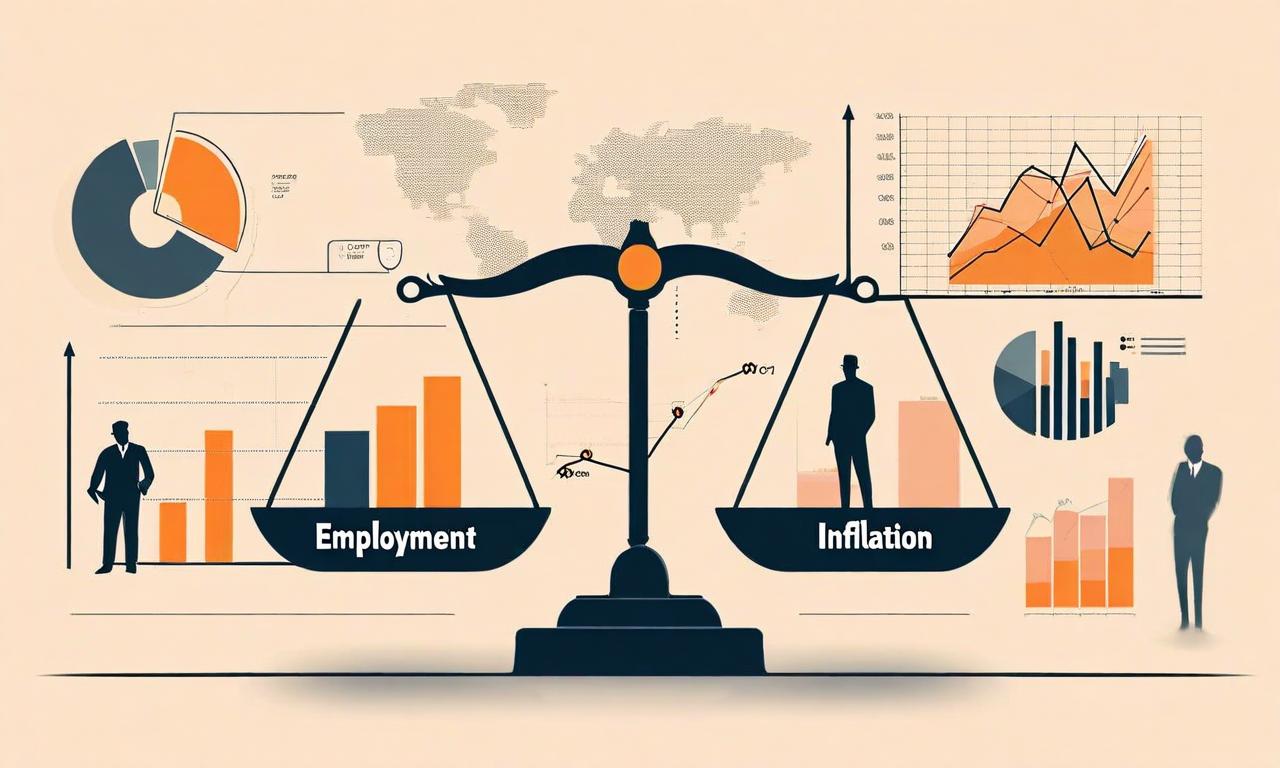Fed Cuts Rates Amid Labor Market Concerns, Powell Cites Downside Risks
Federal Reserve Chair Jerome Powell announced a rate cut, citing new data showing downside risks in the labor market. The decision aims to balance risks affecting inflation and employment. Inflation remains above the 2% target, with August PCE at 2.70% and Core PCE at 2.90%. Powell noted increasing goods prices and ongoing disinflation in services. The labor market shows signs of weakness, with slowing payroll gains and softened demand. Consumer spending continues to drive economic growth, and the financial system remains stable.

*this image is generated using AI for illustrative purposes only.
Federal Reserve Chair Jerome Powell has provided insights into the current state of the U.S. economy, focusing on inflation trends, labor market conditions, and consumer spending. In a significant development, the Federal Reserve has implemented a rate cut, with Powell highlighting new data showing meaningful downside risks in the labor market as the primary driver for the decision.
Rate Cut Decision
Powell noted that while the economy is not weak, policymakers reached a unified decision to balance risks affecting both inflation and employment. This move underscores the Fed's commitment to maintaining economic stability in the face of emerging challenges.
Inflation Remains Above Target
Powell noted that inflation continues to be somewhat elevated, despite recent efforts to bring it under control. According to the latest data:
- August Personal Consumption Expenditures (PCE) inflation stood at 2.70%
- Core PCE, which excludes volatile food and energy prices, was at 2.90%
These figures indicate that inflation remains above the Federal Reserve's long-term target of 2.00%, suggesting that the central bank's work in stabilizing prices is not yet complete.
Shifting Price Dynamics and Rising Goods Inflation
In his analysis, Powell pointed out interesting shifts in price trends:
| Category | Trend |
|---|---|
| Goods prices | Increasing |
| Services sector | Ongoing disinflation |
| Goods inflation | 1.20% |
| Goods inflation contribution to PCE | 0.30-0.40 percentage points |
This divergence highlights the complex nature of inflationary pressures in the current economic environment. Powell also acknowledged that while tariffs primarily impact intermediary companies, there is clear evidence of some costs being passed through to consumers.
Labor Market Showing Signs of Weakness
Powell's comments shed light on a softening labor market:
- Significant slowdown in payroll gains
- Softened labor demand
- Job creation running below the breakeven rate
These indicators suggest a cooling in the previously robust job market, which could have implications for overall economic growth. However, Powell noted that unemployment remains at low levels.
Factors Contributing to Labor Market Weakness
Powell attributed the current labor market conditions to two main factors:
- Reduced participation in the workforce
- Lower immigration levels
These elements are contributing to a tighter labor supply, potentially impacting businesses' ability to fill positions and affecting wage dynamics.
Consumer Spending and Economic Growth
Despite the softening labor market, Powell observed that consumer spending continues to drive economic growth. He noted that this spending may be concentrated among higher earners but remains a significant factor in the economy's performance.
Financial System Stability
In a reassuring statement, Powell reported that the financial system remains stable. He emphasized that banks and households are in good financial condition, with no elevated structural vulnerabilities present in the financial system. Additionally, Powell noted that longer-term inflation expectations continue to be firmly anchored, despite one outlier survey result.
Implications for Monetary Policy
The recent rate cut decision reflects the Federal Reserve's proactive approach to addressing emerging economic challenges. While Powell did not explicitly discuss future monetary policy decisions, his observations on inflation, the labor market, consumer spending, and financial system stability will likely play a crucial role in the Federal Reserve's upcoming deliberations. The balance between fighting inflation, supporting employment, and managing economic growth remains a key challenge for policymakers.





























